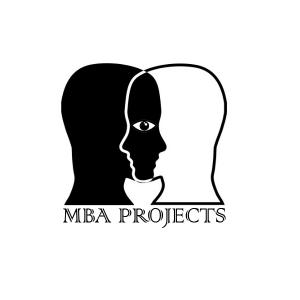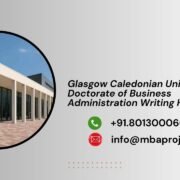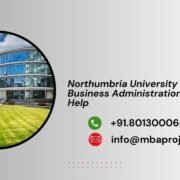41 North Business School Doctorate of Business Administration Writing Help
41 North Business School Doctorate of Business Administration Writing Help
41 North Business School Doctorate of Business Administration Writing Help. Pursuing a Doctorate of Business Administration (DBA) at 41 North Business School is a remarkable achievement that demonstrates dedication to advanced business knowledge, strategic leadership, and impactful research. However, the academic demands of a DBA program are rigorous, requiring candidates to produce high-quality research papers, dissertations, and case studies that reflect originality, depth, and professional relevance. This is where our DBA writing help for 41 North Business School students becomes invaluable.
We provide tailored guidance and professional writing support designed to help scholars meet the highest academic standards while ensuring their work aligns with institutional expectations and global research benchmarks.
Why 41 North Business School DBA Writing Help is Essential
The DBA program at 41 North Business School emphasizes innovation, entrepreneurship, leadership, and practical business research. Candidates are expected to balance their academic responsibilities with professional careers, often creating challenges in time management and research execution.
Our DBA writing assistance ensures that students receive expert support in:
-
Research topic selection and proposal development
-
Structuring dissertations and research projects
-
Ensuring academic rigor, clarity, and originality
-
Data analysis using quantitative and qualitative methods
-
Editing, proofreading, and formatting according to academic standards
By leveraging our expertise, students can focus on contributing valuable insights to the business world while we help polish their academic writing to perfection.
Comprehensive DBA Dissertation Support
One of the most critical milestones in the DBA program is completing the dissertation. At 41 North Business School, dissertations are not only an academic requirement but also a demonstration of a scholar’s ability to solve real-world business challenges.
Our DBA dissertation help includes:
-
Topic Identification: Aligning your dissertation topic with current industry trends, business challenges, and academic interests.
-
Proposal Writing: Crafting compelling and well-structured proposals that secure approval from supervisors.
-
Literature Review: Conducting a thorough review of scholarly work to establish the foundation of your research.
-
Methodology Development: Selecting appropriate research methods, designing surveys, and applying advanced data analysis tools.
-
Findings and Discussion: Presenting data in a clear, evidence-based manner with insightful interpretations.
-
Editing and Proofreading: Ensuring your work is free from errors, well-structured, and compliant with APA or Harvard referencing styles.
Expert Help with DBA Assignments and Case Studies
DBA candidates at 41 North Business School frequently engage with case study analysis, research papers, and strategic business assignments. These require not only academic writing skills but also the ability to apply theories to real-world business scenarios.
Our writing experts assist with:
-
Case study evaluations focusing on leadership, global markets, and organizational innovation.
-
Research essays that integrate theory with practice.
-
Presentation preparation to effectively communicate research findings to peers and faculty.
-
Critical reflections that demonstrate advanced problem-solving skills.
Tailored Research and Data Analysis Support
We provide professional data collection, statistical analysis, and interpretation assistance to support DBA candidates at every stage of their research. Using tools like SPSS, NVivo, STATA, and R, we help students manage complex data sets and derive meaningful insights.
Our team supports:
-
Quantitative research: Regression analysis, hypothesis testing, and econometric modeling.
-
Qualitative research: Thematic coding, content analysis, and case study evaluation.
-
Mixed-methods research: Integrating quantitative and qualitative approaches for holistic results.
Editing, Proofreading, and Formatting for Perfection
High-quality academic writing goes beyond research; it requires precision in language, structure, and presentation. Our DBA editing services ensure:
-
Grammar and syntax accuracy
-
Consistency in tone and style
-
Proper referencing and citation
-
Compliance with academic formatting guidelines
-
Improved clarity and readability
Every document is meticulously reviewed to meet the professional standards expected at 41 North Business School.
Plagiarism-Free and Original DBA Writing
Academic integrity is a cornerstone of doctoral-level research. We guarantee 100% plagiarism-free writing through rigorous originality checks using advanced plagiarism detection tools. Each project is crafted from scratch, ensuring authentic contributions that align with your academic and professional goals.
Why Choose Our DBA Writing Help for 41 North Business School
Our expertise lies in providing personalized support for doctoral candidates who seek to excel in their research and academic writing. Here’s why students rely on us:
-
Experienced Academic Writers: Specialists with doctoral-level qualifications and professional business backgrounds.
-
Customized Assistance: Support tailored to your specific dissertation, research, or assignment requirements.
-
Confidentiality Guaranteed: All work remains strictly private and secure.
-
24/7 Support: Assistance available whenever you need it, accommodating global time zones.
-
Proven Success Rate: Many of our clients have successfully completed their DBA with distinction.
Achieve Academic Success with Professional Writing Guidance
Completing the Doctorate of Business Administration at 41 North Business School is a transformative journey that positions graduates as thought leaders in business and academia. With the right writing support, students can overcome challenges, meet deadlines, and produce research that makes a lasting impact.
Our DBA writing help services empower candidates to focus on their intellectual contributions while we provide the technical expertise required to deliver polished, professional, and outstanding academic work.
Conclusion: 41 North Business School Doctorate of Business Administration Writing Help
Pursuing a DBA at 41 North Business School is both prestigious and demanding. With our expert DBA writing support, you can be confident in presenting research and academic work that meets the highest standards of scholarly excellence. From dissertation development to assignment writing and editing, we provide end-to-end solutions that help you succeed in your doctoral journey.
Thank you for reading our Blog “41 North Business School Doctorate of Business Administration Writing Help”.
Also, read our more BLOG here.
For Order “DBA Projects” feel free to contact us at Mob: Call / WhatsApp: +91.8013000664 || Email: info@mbaprojects.net.in














